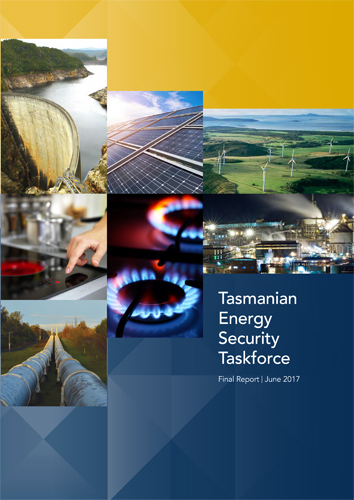If the government needed an opening for bold action on emissions, this is a pretty good one.
 The final report of the Tasmanian Energy Security Taskforce, released by the state government earlier this month, is a positive step towards a more secure future.
The final report of the Tasmanian Energy Security Taskforce, released by the state government earlier this month, is a positive step towards a more secure future.
Not a ringing endorsement, but I have to bear in mind that others don’t share my sense of urgency about emissions abatement. The wheels of authority tend to move slowly and we should be thankful whenever there’s a move in the right direction
In this case there are several, including recommendations that the government support monitoring of energy security, that water storage management be improved and that more local generation be encouraged, including innovative customer solutions.
The report recommends that the Tasmanian Economic Regulator be given the task of assessing and monitoring the state’s energy security risk, and that the Director of Energy Planning be in charge of coordinating responses to low water storages.
It proposes that an “energy security risk response framework” be introduced to clarify when Hydro Tasmania may enjoy full commercial freedom and when it must act to address energy security risks.
To start the ball rolling, the taskforce has developed profiles for high reliability and prudent storage levels, based on conservative assumptions for rainfall and Basslink availability.
On those same rainfall assumptions, the taskforce calculates that Tasmania’s annual generating capacity is below what it should be by between 700 and 1000 GWh, or seven to 10 per cent. It recommends that market barriers be lifted to allow new players to develop new renewable projects.
“Piloting of fast moving consumer-led technologies and other innovations would be positive for business sentiment,” says the report. It proposes that private interests join local businesses and researchers to trial such new technologies as storage integration and electric vehicles.
The idea isn’t exactly revolutionary, but it’s good to see it coming from a Hodgman government inquiry by high-level industry players – former Hydro and Aurora CEO Geoff Willis and energy market experts Sibylle Krieger and Tony Concannon
For years Tasmania has dined out on its clean-green image and the wisdom of the market, whatever that is. On the key issues identified by the taskforce – storage integration and electric cars – the Hodgman government has chosen to wait for a lead from the marketplace.
But leaving all the running to business is no longer an option. Both in Australia and abroad the public mood has been steadily shifting in favour of more assertive governments prepared when necessary to intervene in markets.
Energy minister Matthew Groom flagged a new direction earlier this month, announcing an upgrade of the Derwent hydro system along with a plan to add 1000 gigawatt hours of renewable energy using pumped hydro with new wind, solar and biomass projects.
That’s very laudable, but it does little to cut fossil-fuel emissions. Transport is the biggest polluter in Tasmania. Latest state greenhouse accounts have road transport contributing over 1.6 megatonnes a year, or 30 per cent of total emissions, of which cars contribute more than half.
So besides boosting renewables to secure our electricity supply, Matthew Groom must also make a decisive move to curb emissions from fossil-fuelled transport. His clean energy strategy won’t add up to much if it doesn’t address this elephant in the room.
But with an election due in March next year, the energy security taskforce has opened a door for the Hodgman government to take the running on our energy future. It’s not a huge opening – just a crack, actually – but that may be all that’s needed.
The taskforce noted that “there is some obligation on governments to address barriers (to electric vehicle take-up) that are within their scope of influence”, including tariff structures, safety and affordability.
Cutting Tasmanian emissions was not part of the inquiry’s terms of reference. It should have been, and in that case the taskforce would have had to go much further along this path, such as we’re starting to see in other jurisdictions.
While Australia has sat on its hands over transport emissions, chronic urban air pollution has led western European governments to focus hard on this issue for a long time. Now we have a clear idea where their thinking is taking them.
The scene was set by various carmakers accelerating electric vehicle rollout. In March, for instance, Mercedes announced 10 new electric models and last month Peugeot and Volvo committed to make only hybrid or pure electric vehicles within eight years.
Then in July there were a couple of bombshells. First, France’s Macron administration announced that it would ban sales of petrol or diesel vehicles from 2040. Not to be outdone, the Conservative government in Britain declared four weeks ago that it would be doing the same.
When these targets translate into firm measures they will have an inevitable impact on the motor vehicle industry and new car buyers. If more European or other countries follow those leads, sales of electric vehicles globally are bound to increase, perhaps soon and perhaps dramatically.
An action like this seems impossible for Tasmania. Our governments are too tied to the status quo, or too insignificant, lacking in vision or fearful of consequences. But you never know.
